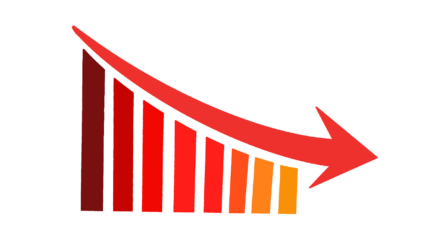Nudge theory theory has the potential to revolutionize the way healthcare is delivered by encouraging patients to make healthier choices, leading to improved health outcomes and reduced healthcare costs.
In this blog post, we will explore the application of nudge theory in healthcare, including examples of successful interventions, the potential benefits and limitations of this approach, and future directions for research in this field.
Definition of Nudge Theory
Nudge theory is a concept in behavioral economics that suggests that small changes in the environment can influence behavior in a positive way without restricting choice. It was popularized by economist Richard Thaler and legal scholar Cass Sunstein in their 2008 book “Nudge: Improving Decisions About Health, Wealth, and Happiness.”
The theory suggests that small “nudges” in the form of subtle cues or default options can lead to significant changes in behavior.
Nudge theory has been applied in a variety of fields, including healthcare, finance, and environmental policy, with the goal of encouraging people to make healthier, more sustainable, or more financially sound choices.
How Nudge Theory can be applied in healthcare
Nudge theory can be applied in healthcare by making small changes to the environment or decision-making process to encourage patients to make healthier choices. These nudges can take many forms, such as:
- Default options: By setting a default option, such as organ donation or vaccination, individuals are more likely to stick with that choice.
- Reminders: Sending reminders for preventative screenings or medication refill can increase the likelihood that individuals will take action.
- Simplifying choices: By reducing the number of options or making them more salient, individuals are more likely to make a decision.
- Social norms: By highlighting the actions of others who have made a certain choice, individuals are more likely to follow suit.
- Feedback: By providing individuals with information about their health status or behavior, it can change their actions.
By applying these nudges in healthcare, the goal is to improve health outcomes and reduce healthcare costs by encouraging patients to make healthier choices. Research has shown that nudge interventions in healthcare can lead to increased organ donation rates, improved preventive screening rates, and reduced medication noncompliance
Examples of nudge interventions in healthcare
Here’re three examples that help us to understand how nudge theory in applied in healthcare:
Default options for organ donation
Default options, also known as “opt-out” systems, are one way that nudge theory can be applied in healthcare. This approach works by assuming that individuals will take a certain action unless they actively choose to opt-out. In the context of organ donation, default options can be used to increase the number of organ donors.
One example of a default option nudge in healthcare is the use of an “opt-out” system for organ donation. In an opt-out system, individuals are considered organ donors unless they explicitly choose to opt-out. This approach has been shown to increase organ donation rates in countries such as Spain and Belgium.
Another example is the use of “presumed consent” laws, which assume that individuals have consented to organ donation unless they have explicitly opted-out or are deemed ineligible. This approach has also been shown to increase organ donation rates.
These nudges are often used as a way to overcome the inertia and procrastination of individuals to make a decision about organ donation and increase the number of donors.
It’s worth noting that these nudges are not without criticism, as some argue that opt-out systems may not respect the autonomy of individuals and may lead to exploitation of vulnerable populations. Therefore, it’s important to consider the ethical implications of nudges and make sure that they respect the individuals’ rights and choices.
Reminders for preventative screenings
Reminders are another way that nudge theory can be applied in healthcare. This approach works by sending prompts or notifications to individuals to remind them to take a certain action, such as scheduling a preventative screening.
One example of a reminder nudge in healthcare is sending text message or email reminders to patients to schedule preventative screenings such as mammograms or colon cancer screenings. Studies have shown that these types of reminders can increase the rate of screening participation.
Another example is the use of personalized, tailored reminders that take into account the individual’s preferences, such as their preferred method of communication, or the time of day they are most likely to respond. These types of reminders have been shown to be more effective than generic reminders.
Additionally, reminders can be sent to patients with chronic conditions to remind them to take their medication or attend follow-up appointments. This can help improve medication adherence and disease management.
It’s important to note that while reminders can be a powerful tool to influence behavior, they may not be effective for everyone and may be more effective when combined with other nudges. It’s also crucial to respect individuals’ privacy and preferences when sending reminders, for instance, by giving them the option to opt-out
Simplifying medication regimens
Simplifying medication regimens is another way that nudge theory can be applied in healthcare. This approach works by reducing the complexity of medication regimens, making it easier for individuals to understand and follow their treatment plan.
One example of a simplification nudge in healthcare is the use of medication synchronization, where a patient’s refill dates are coordinated so that all medications are refilled on the same day. This can make it easier for individuals to keep track of their medication schedule and reduce the likelihood of missing doses.
Another example is the use of medication blister packs, which are pre-packaged in daily doses. This can make it easier for individuals to remember which pills to take and when, and can also reduce the likelihood of medication errors.
Additionally, simplifying medication regimens can also involve reducing the number of pills a patient needs to take per day, or grouping pills by time of day, which can make it easier for patients to remember to take their medication and also improve their adherence.
It’s worth noting that simplifying medication regimens can also have an impact on healthcare costs, as medication noncompliance can lead to increased hospitalization and other healthcare costs. However, it’s important to ensure that simplifying medication regimens does not compromise the effectiveness of the treatment and that it’s tailored to the individual’s needs.
Results of nudge interventions in healthcare
Increased organ donation rates
One example of a successful nudge intervention in organ donation is the use of an “opt-out” system, where individuals are considered organ donors unless they explicitly choose to opt-out. This approach has been shown to increase organ donation rates in countries such as Spain, which has one of the highest organ donation rates in the world.
Another example is the use of “presumed consent” laws, which assume that individuals have consented to organ donation unless they have explicitly opted-out or are deemed ineligible. This approach has also been shown to increase organ donation rates.
In addition to increasing organ donation rates, nudge interventions can also have other benefits such as reducing the time and costs associated with organ donation, and increasing the number of transplants, which can save lives.
Improved preventive screening rates.
Another example of a successful nudge intervention in preventive screening is the use of text message or email reminders to patients to schedule preventative screenings such as mammograms or colon cancer screenings. Studies have shown that these types of reminders can increase the rate of screening participation.
Another example is the use of personalized, tailored reminders that take into account the individual’s preferences, such as their preferred method of communication, or the time of day they are most likely to respond. These types of reminders have been shown to be more effective than generic reminders.
Additionally, creating easy access to the screening, such as providing transportation or on-site screenings, can improve the preventive screening rates as well.
Preventive screenings are important because they can detect diseases or conditions early, when they are most treatable, and can also lead to cost savings in the long-term by preventing the progression of chronic diseases.
Reduced medication noncompliance
One example of a successful nudge intervention in medication compliance is the use of medication synchronization, where a patient’s refill dates are coordinated so that all medications are refilled on the same day. This can make it easier for individuals to keep track of their medication schedule and reduce the likelihood of missing doses.
Another example is the use of medication blister packs, which are pre-packaged in daily doses. This can make it easier for individuals to remember which pills to take and when, and can also reduce the likelihood of medication errors.
Additionally, simplifying medication regimens can also involve reducing the number of pills a patient needs to take per day, or grouping pills by time of day, which can make it easier for patients to remember to take their medication and also improve their adherence.
Criticisms of Nudge Theory in Healthcare
Ethical concerns: manipulation of patient choices
One of the ethical concerns about nudge theory in healthcare is that it may be seen as manipulating patient choices. This concern arises from the fact that nudges are designed to influence behavior in a certain way, and some people may feel that their autonomy is being restricted.
For example, an opt-out system for organ donation may be viewed as manipulative because it presumes that individuals will want to donate their organs unless they take action to opt-out. Similarly, sending reminders for preventive screenings may be seen as manipulative because it presumes that individuals will not schedule a screening unless prompted to do so.
Critics argue that these nudges can be seen as a form of manipulation and may not respect the autonomy of individuals. They also argue that these nudges may lead to exploitation of vulnerable populations, such as low-income or minority groups, who may be more susceptible to the influence of nudges.
It’s important to consider the ethical implications of nudges and ensure that they respect the individuals’ rights and choices. Nudges should be designed with transparency in mind, and individuals should be informed about the nudges and be able to opt-out if they choose to do so.
Disregard of patient autonomy
Another ethical concern related to the use of nudges in healthcare is that they may be seen as disregarding patient autonomy. Patient autonomy refers to the right of individuals to make their own decisions about their health and healthcare, without coercion or manipulation.
Critics argue that nudges, by their very nature, can be seen as a form of manipulation, and may not respect the autonomy of individuals. For example, an opt-out system for organ donation may be viewed as disregarding patient autonomy because it presumes that individuals will want to donate their organs unless they take action to opt-out. Similarly, sending reminders for preventive screenings may be seen as disregarding patient autonomy because it presumes that individuals will not schedule a screening unless prompted to do so.
Critics also argue that nudges may lead to paternalistic decision-making, where healthcare providers or policymakers make decisions for patients rather than involving patients in the decision-making process. This can be seen as disregarding the autonomy of patients and not respecting their right to self-determination.
Practical limitations– Difficulty in identifying effective nudges
A practical limitation of using nudges in healthcare is the difficulty in identifying effective nudges. Nudges are small changes in the environment or decision-making process that are intended to influence behavior, but not all nudges are equally effective. Identifying effective nudges requires a thorough understanding of the behavior being targeted and the factors that influence it.
For example, while text message reminders may be an effective nudge for one population, it may not be as effective for another population. This is because different populations may have different preferences and barriers to accessing preventive screenings.
Limited applicability to certain patient population
Another practical limitation of using nudges in healthcare is that they may not be applicable to certain patient populations. Nudges are designed to influence behavior, but not all individuals will respond to the same nudges in the same way. Different patient populations may have different preferences, barriers, and needs that need to be taken into account when designing nudges.
For example, a nudge that is effective in increasing medication adherence among older adults may not be as effective for younger adults because of differences in technology use. Additionally, certain populations such as low-income or minority groups may have different preferences and barriers that need to be taken into account when designing nudges.
Final Words
Nudge theory is a concept in behavioral economics that suggests that small changes in the environment can influence behavior in a positive way without restricting choice. It has the potential to revolutionize the way healthcare is delivered by encouraging patients to make healthier choices, leading to improved health outcomes and reduced healthcare costs. However, there are also limitations and ethical concerns associated with the use of nudges in healthcare.



